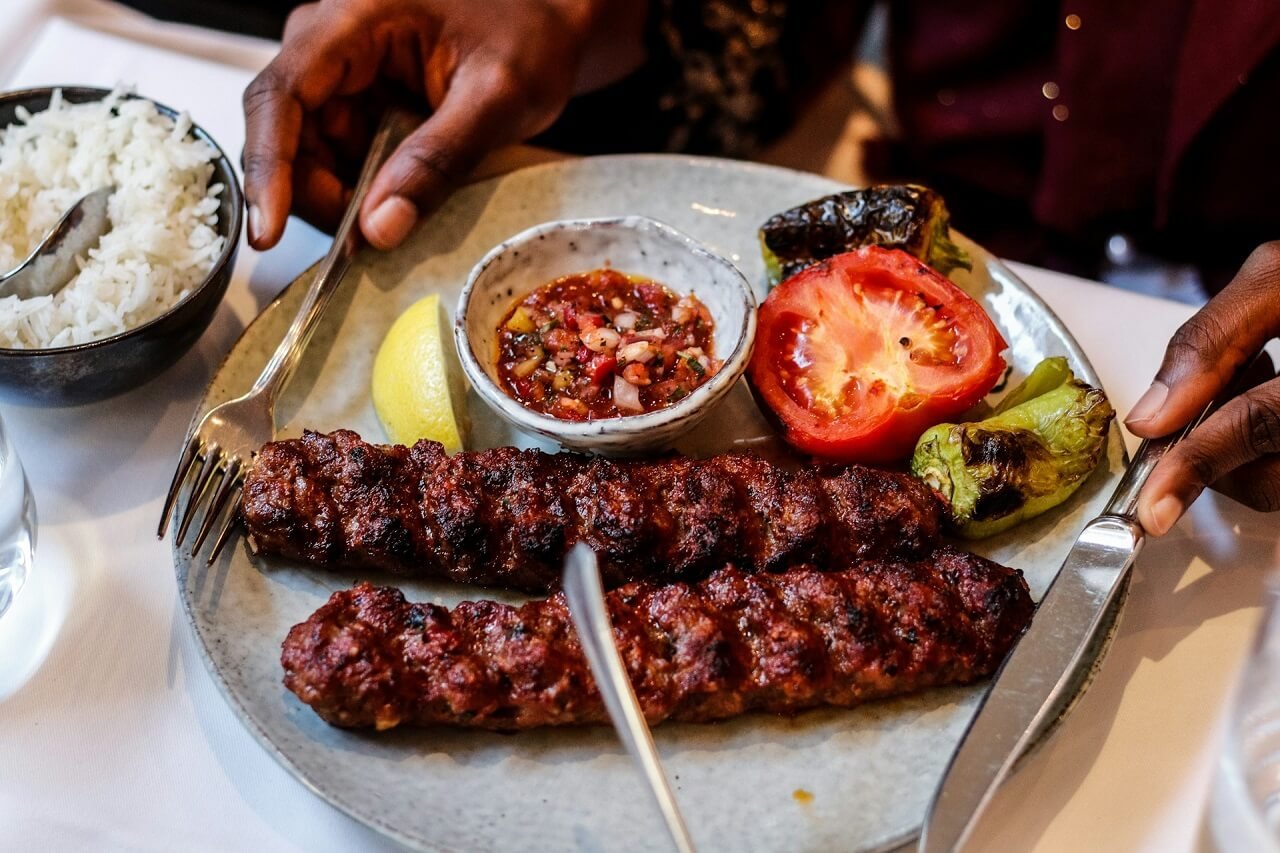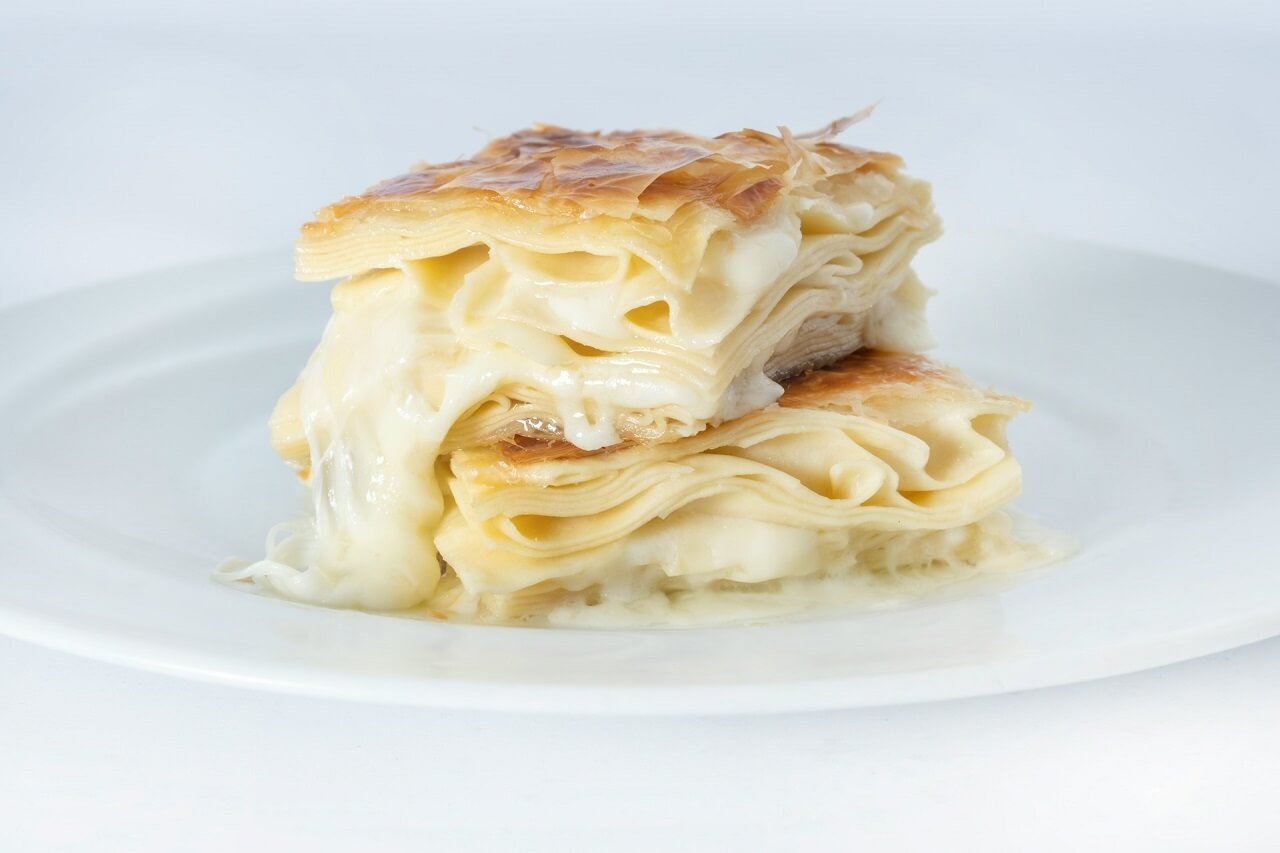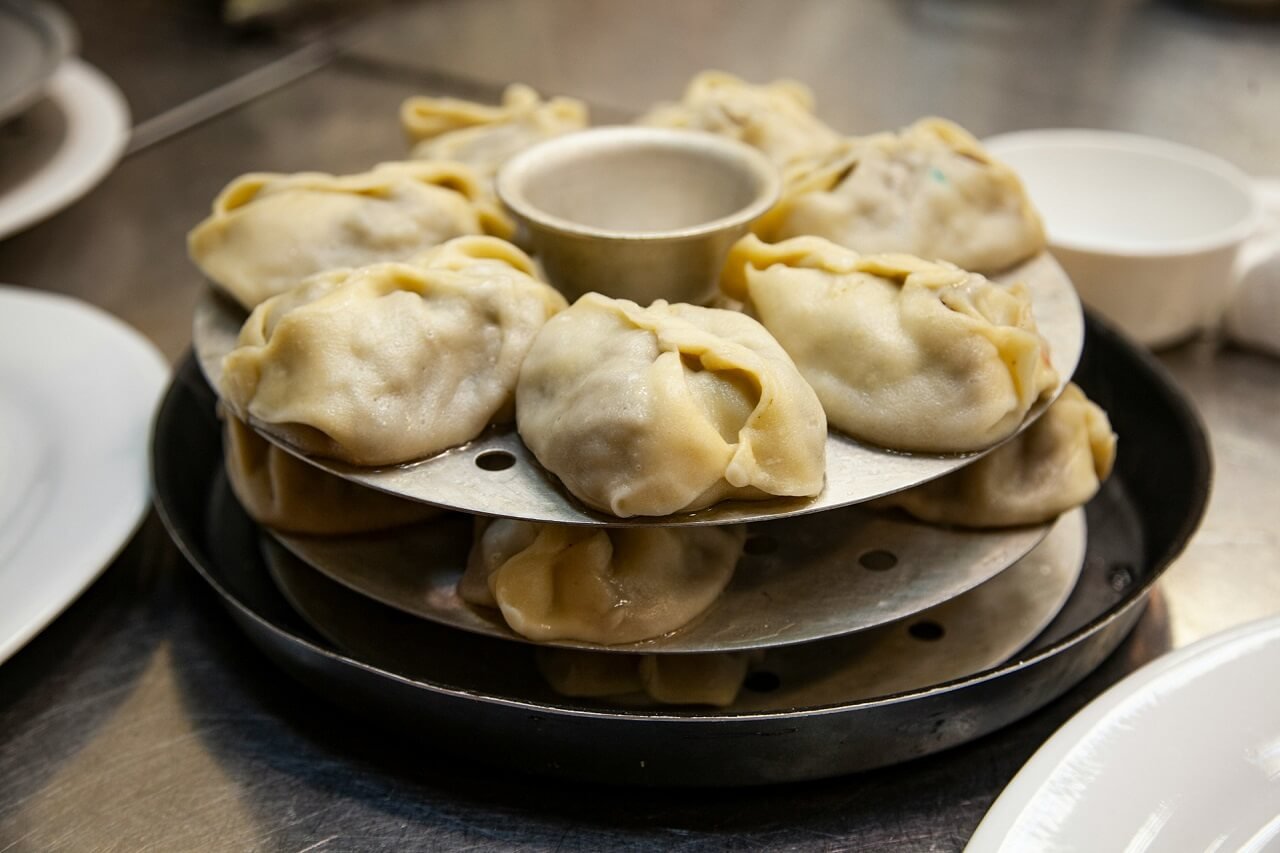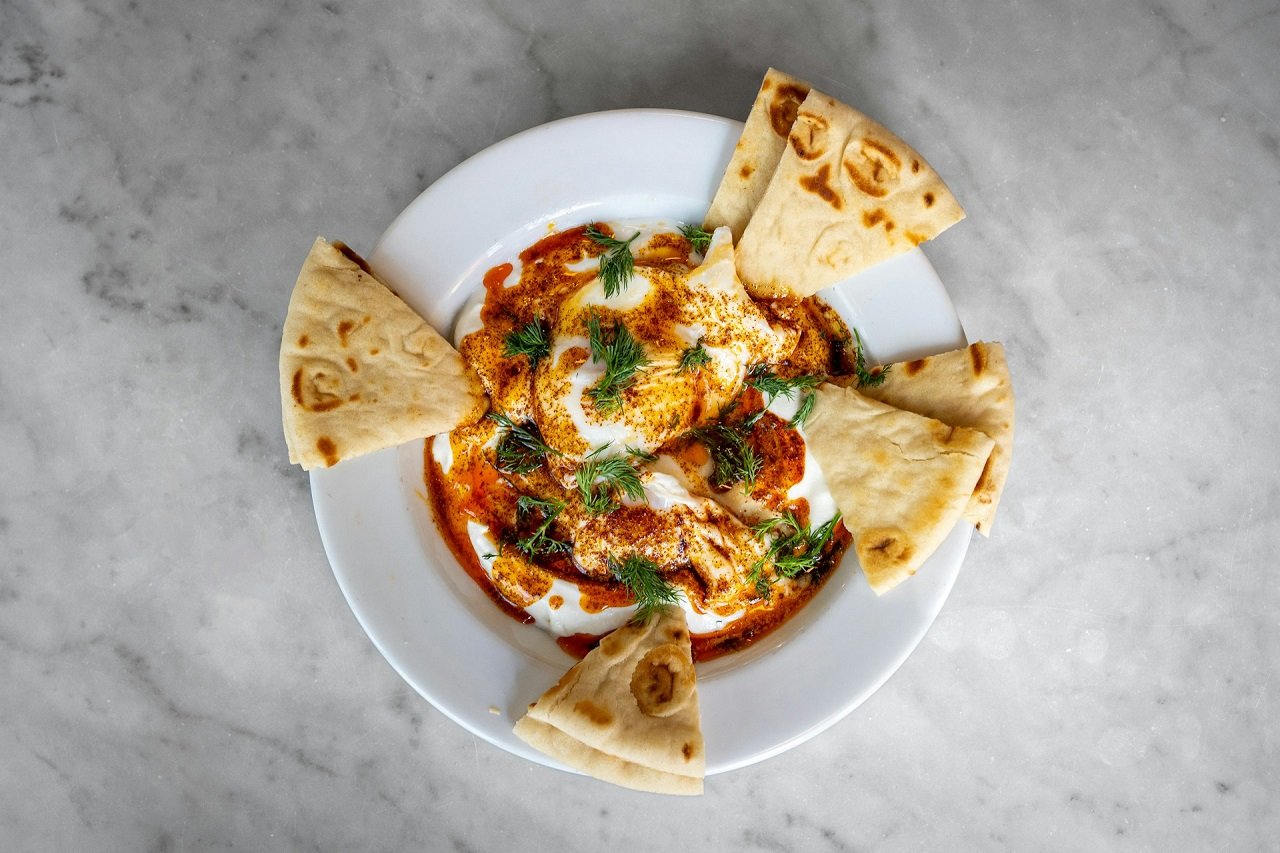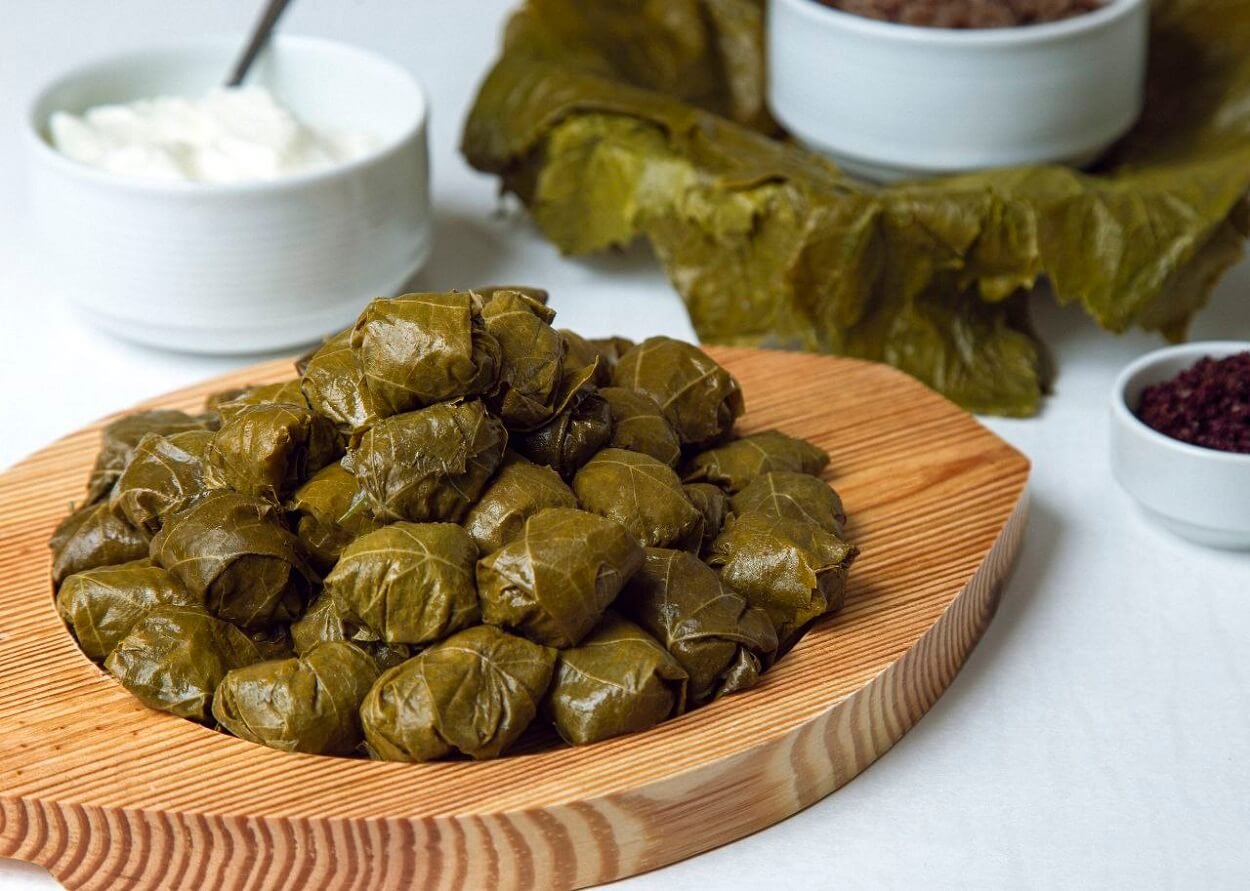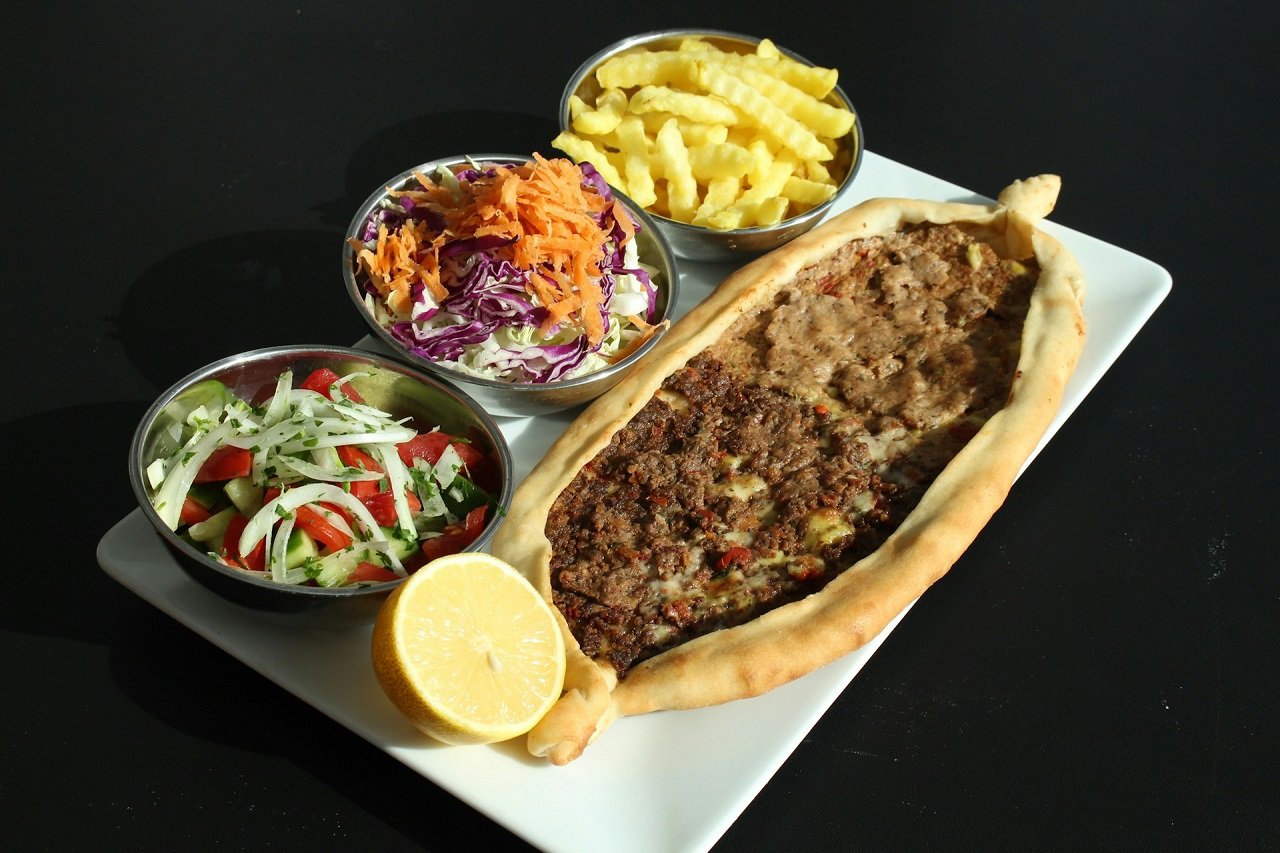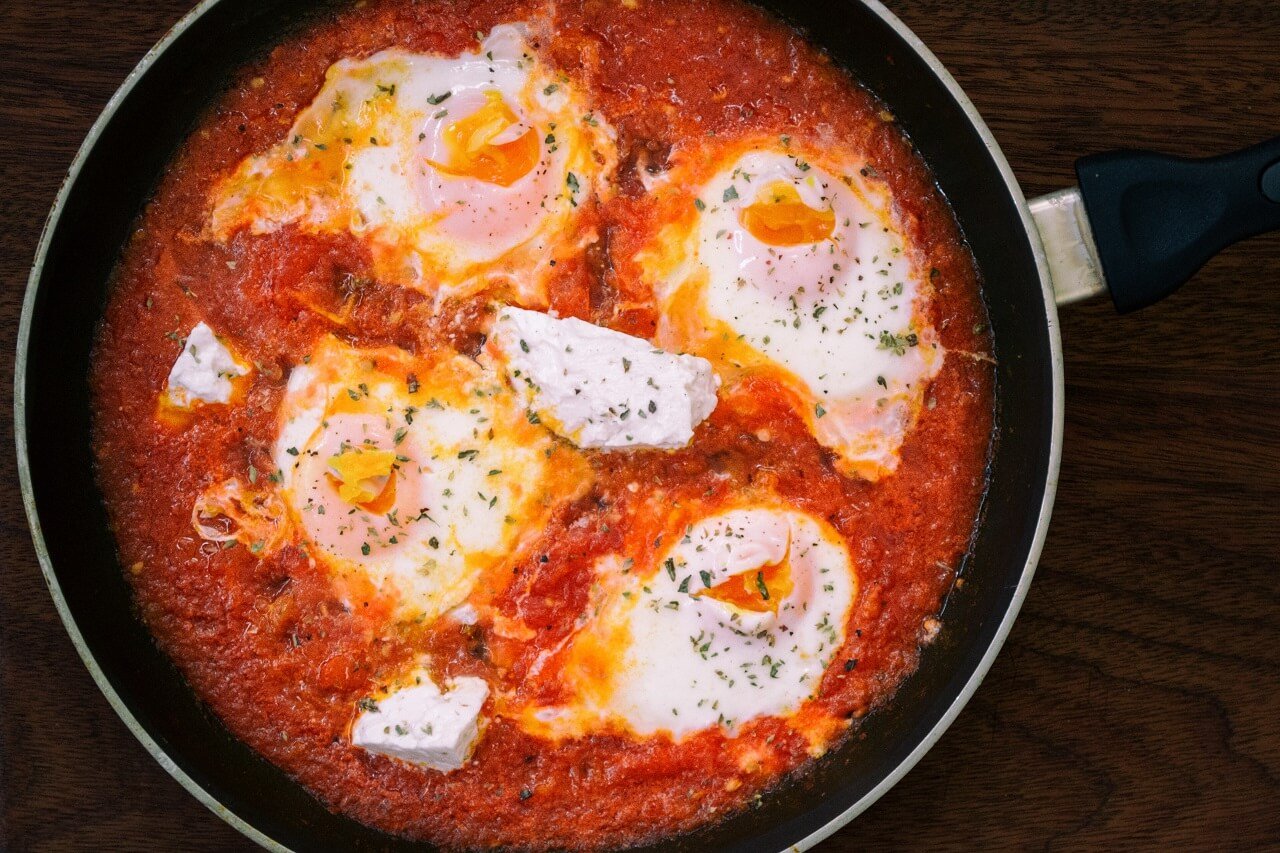Turkish Traditional Food: 10 Best Dishes You Must Try
Table of Contents
ToggleTurkey, a country bridging Europe and Asia, boasts a rich culinary history shaped by various influences. Its traditional dishes have gained international acclaim due to their vibrant flavors, diverse ingredients, and cultural significance.
From savory kebabs to mouth-watering desserts, Turkish cuisine offers a delightful mix of tastes that reflect the country’s unique blend of Eastern and Western influences.
Let’s explore ten of the best traditional dishes you must try when discovering Turkish cuisine.
1. Kebab (Kebap)
Overview of Kebabs in Turkish Cuisine
Kebab is perhaps one of the most recognizable Turkish dishes worldwide.
With a variety of styles and flavors, the term “kebab” generally refers to grilled or skewered meats.
However, Turkish kebabs vary significantly across regions, each offering a unique twist on this popular dish.
Types of Kebabs
- Şiş Kebab: Tender pieces of lamb or chicken skewered and grilled over an open flame.
- Adana Kebab: A spicy ground lamb kebab mixed with red pepper flakes, originating from the city of Adana.
- İskender Kebab: Thin slices of döner (rotating roasted meat) served over pita bread, topped with yogurt, tomato sauce, and sizzling butter.
Cultural Significance
Kebabs have a deep cultural history in Turkey, often enjoyed during special gatherings and celebrations.
The mastery behind kebab making is passed down through generations, preserving the rich culinary traditions of the region.
2. Börek
What is Börek?
Börek is a savory pastry made from layers of thin dough (yufka), filled with ingredients such as cheese, minced meat, spinach, or potatoes.
Börek is baked to perfection, resulting in a crispy, flaky exterior and a soft, flavorful filling.
Different Types of Börek
- Su Böreği: Soft and tender, made by boiling the dough sheets before layering.
- Sigara Böreği: Small, cigar-shaped rolls filled with feta cheese and herbs.
- Tepsi Böreği: A large, tray-baked börek, often sliced into squares or triangles.
Historical Roots
Börek has Ottoman origins and has been a beloved street food for centuries. It is commonly served during breakfast or as a snack with tea.
3. Manti
Turkish Dumplings: Manti
Manti are small Turkish dumplings filled with ground lamb or beef, typically served with a garlic yogurt sauce and melted butter infused with paprika.
The dumplings are delicate and handmade, a process that requires skill and patience.
Regional Variations
While most manti are tiny, some regions like Kayseri are known for producing exceptionally small dumplings, with the goal being to fit several into a single spoon.
The art of making manti is a testament to Turkish culinary expertise.
A Comforting Dish
Manti is a popular comfort food in Turkey and is often enjoyed during family gatherings or special occasions. Its hearty and rich flavor makes it a beloved staple in Turkish households.
4. Lahmacun
What is Lahmacun?
Lahmacun is often referred to as Turkish pizza, but it’s much lighter and spicier than its
Western counterpart. It consists of a thin, crispy dough topped with a mixture of minced meat, onions, tomatoes, and various herbs and spices.
How to Enjoy Lahmacun
Traditionally, lahmacun is served with a side of fresh salad, and people roll it up with lettuce, parsley, and a squeeze of lemon for an extra burst of freshness.
A Street Food Favorite
Lahmacun is popular street food in Turkey and is often sold in small shops and by street vendors. It’s an affordable and quick meal that satisfies both locals and tourists.
5. Meze
Introduction to Meze
Meze refers to an array of small dishes served as appetizers or side dishes.
These bite-sized portions are enjoyed alongside drinks, usually rakı (an anise-flavored alcoholic beverage). Meze plates offer a variety of flavors, from fresh salads to rich dips.
Popular Meze Dishes
- Hummus: A creamy dip made from chickpeas, tahini, lemon juice, and garlic.
- Haydari: A thick yogurt-based dip with garlic, dill, and olive oil.
- Patlıcan Salatası: A smoky roasted eggplant salad.
The Social Aspect of Meze
Meze is not just about the food but also the experience of sharing a meal with friends and family. It’s a central part of Turkish social dining, where conversations and laughter flow as freely as the dishes.
6. Dolma and Sarma
Understanding Dolma and Sarma
Dolma and Sarma are traditional dishes where vegetables, vine leaves, or cabbage leaves are stuffed with a variety of fillings.
Dolma typically refers to stuffed vegetables like peppers, tomatoes, or zucchinis, while Sarma involves wrapping vine or cabbage leaves around a filling of rice, herbs, and sometimes minced meat.
Common Fillings
- Rice: Often flavored with pine nuts, currants, and cinnamon for a sweet-savory mix.
- Meat: Ground lamb or beef can be added to the rice filling for a heartier dish.
Symbolic Dish
Dolma and Sarma are often prepared during significant family celebrations, symbolizing hospitality and abundance.
7. Köfte
What is Köfte?
Köfte are Turkish meatballs, typically made from ground lamb or beef mixed with spices, onions, and herbs.
They are grilled or pan-fried and are served with a variety of accompaniments, such as rice, salad, or pita.
Variations of Köfte
- İnegöl Köfte: A special kind of meatball originating from the town of İnegöl, known for its soft texture and mild flavor.
- Çiğ Köfte: A raw version made from finely ground bulgur and spices, traditionally served as a cold dish.
A Simple, Yet Beloved Dish
Köfte is a staple in Turkish homes due to its simplicity and versatility. It’s often a go-to meal for family dinners or barbecue gatherings.
8. Pide
Turkish Pide: The Oval Pizza
Pide is a flatbread that’s boat-shaped and topped with various ingredients, such as cheese, minced meat, vegetables, or eggs.
Often referred to as Turkish pizza, it’s baked until the dough is crispy and the toppings are bubbling with flavor.
Types of Pide
- Kıymalı Pide: Topped with ground meat, onions, and tomatoes.
- Kaşarlı Pide: Made with melted Turkish cheese.
A Shared Dish
Pide is often ordered as a shared meal in Turkish restaurants, offering an inviting aroma and taste that’s irresistible to both locals and tourists.
9. Menemen
What is Menemen?
Menemen is a classic Turkish breakfast dish from scrambled eggs cooked with tomatoes, green peppers, onions, and sometimes cheese.
It’s similar to a shakshuka but with a distinctive Turkish twist.
Perfect for Breakfast
Served with fresh bread, Menemen is a hearty and satisfying way to start the day, and it’s a common dish in Turkish households and cafes alike.
A National Favorite
Whether at home or in a restaurant, Menemen is a beloved breakfast item that showcases the simplicity and freshness of Turkish ingredients.
10. Baklava
The Sweet Ending: Baklava
Every list of Turkish dishes would be complete with Baklava, a rich, sweet pastry made of layers of filo dough, filled with chopped nuts, and sweetened with syrup or honey.
The crisp texture and sweet flavor make it a must-try dessert.
Regional Varieties
Gaziantep Baklava: Known for using pistachios, this version hails from the southeastern city of Gaziantep, considered the baklava capital of Turkey.
Walnut Baklava: A variation that uses walnuts instead of pistachios for a distinct flavor.
A Festive Treat
Baklava is often prepared for celebrations, such as weddings or religious holidays, and is commonly gifted as a symbol of hospitality.
Conclusion
Turkish cuisine is a vibrant blend of flavors, traditions, and regional influences that reflect the rich cultural history of the country. Each dish, from the savory delights of kebabs and börek to the sweet indulgence of baklava, offers a unique taste of Turkey’s culinary heritage.
Whether you’re savoring the spiced richness of Adana kebab or enjoying the delicate craftsmanship of manti, Turkish food is deeply rooted in hospitality and communal dining.
These 10 traditional dishes are just a glimpse into the vast and diverse world of Turkish cuisine, each meal telling its own story of cultural exchange, family traditions, and timeless recipes passed down through generations.
Exploring these flavors is not only a feast for the palate but also a journey through Turkey’s heart and soul.
For food lovers and travelers alike, discovering Turkish dishes is an unforgettable experience that brings people together and celebrates the essence of life’s simple pleasures: good food and great company.
What are the most popular traditional Turkish dishes?
Traditional Turkish dishes include kebabs, börek, manti, lahmacun, dolma, and baklava, each offering unique flavors that reflect Turkey’s rich culinary heritage.
What is the difference between Turkish kebab and other kebabs?
Turkish kebabs vary by region and cooking style, including varieties like Adana (spicy minced meat) and İskender (döner with yogurt and tomato sauce), known for their bold flavors and fresh ingredients.
What is Turkish manti and how is it served?
Manti are Turkish dumplings filled with ground meat, typically served with a garlic yogurt sauce and melted butter flavored with paprika, a beloved comfort food in Turkey.
How is Turkish baklava made?
Turkish baklava is made with layers of filo dough, filled with nuts (usually pistachios or walnuts), and sweetened with syrup or honey. It's a popular dessert during celebrations.
What is the traditional way to eat Turkish lahmacun?
Lahmacun, often called Turkish pizza, is traditionally eaten by rolling it with fresh salad, parsley, and a squeeze of lemon for added freshness and flavor.
What are Turkish meze dishes, and how are they served?
Meze are small, flavorful appetizers served in Turkish cuisine, including dishes like hummus, haydari, and eggplant salad, often enjoyed with rakı in a social setting.


